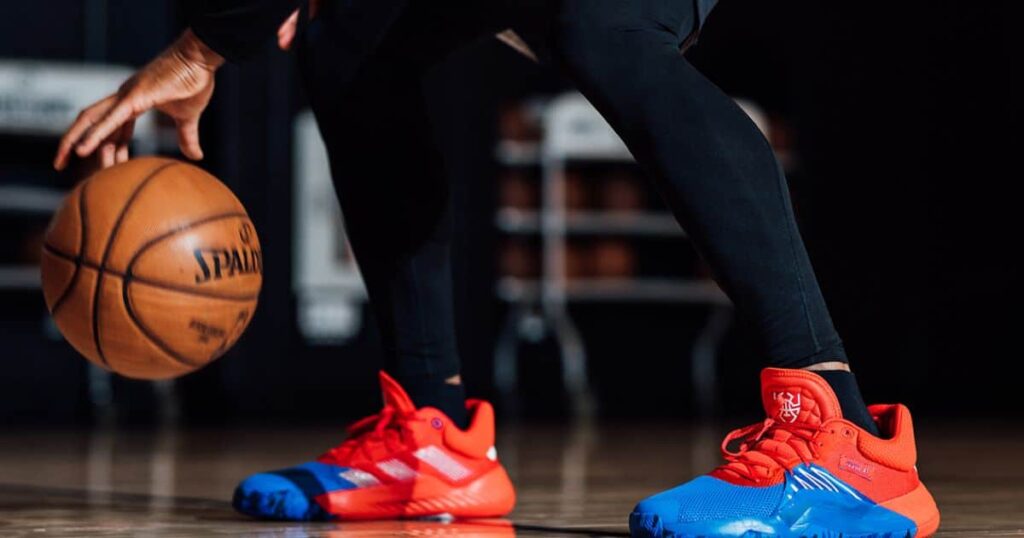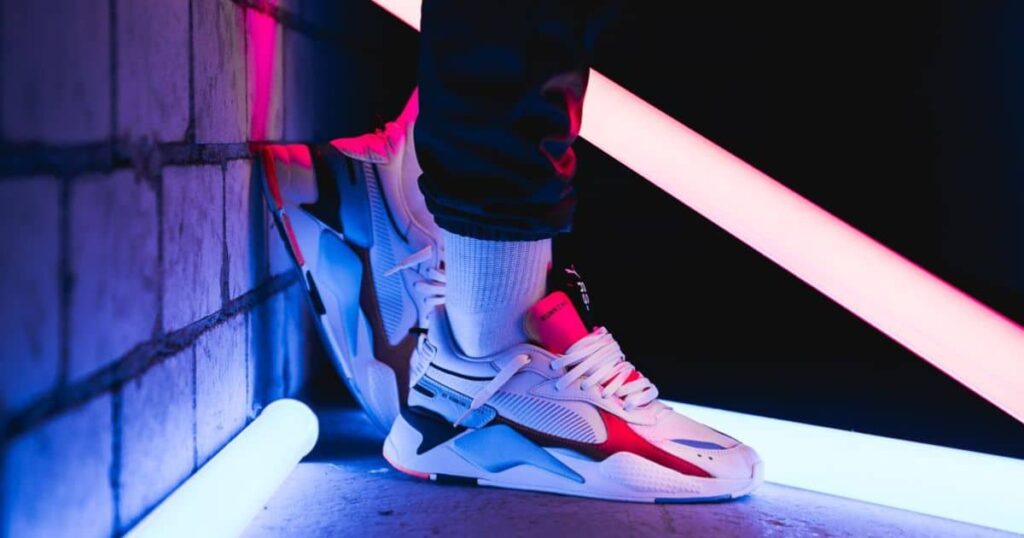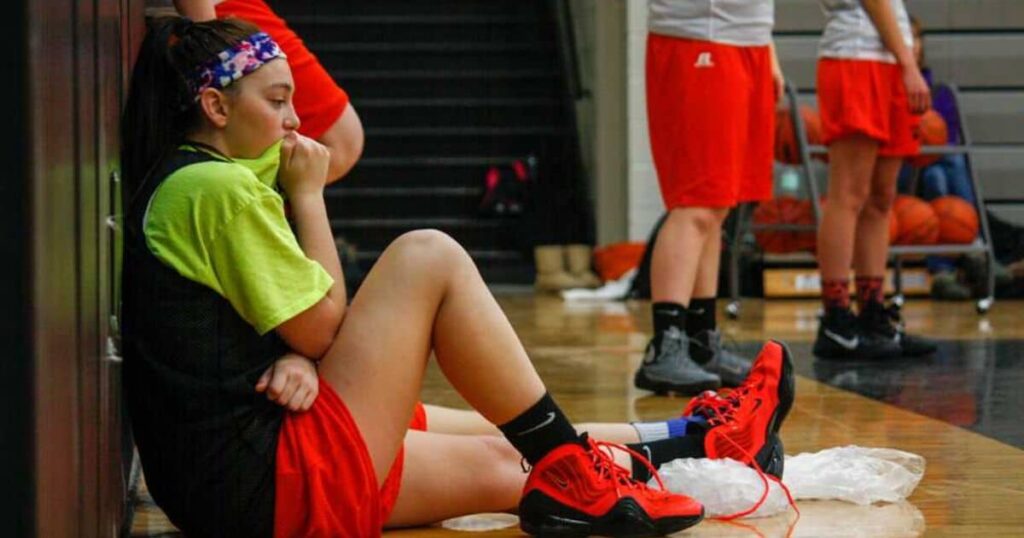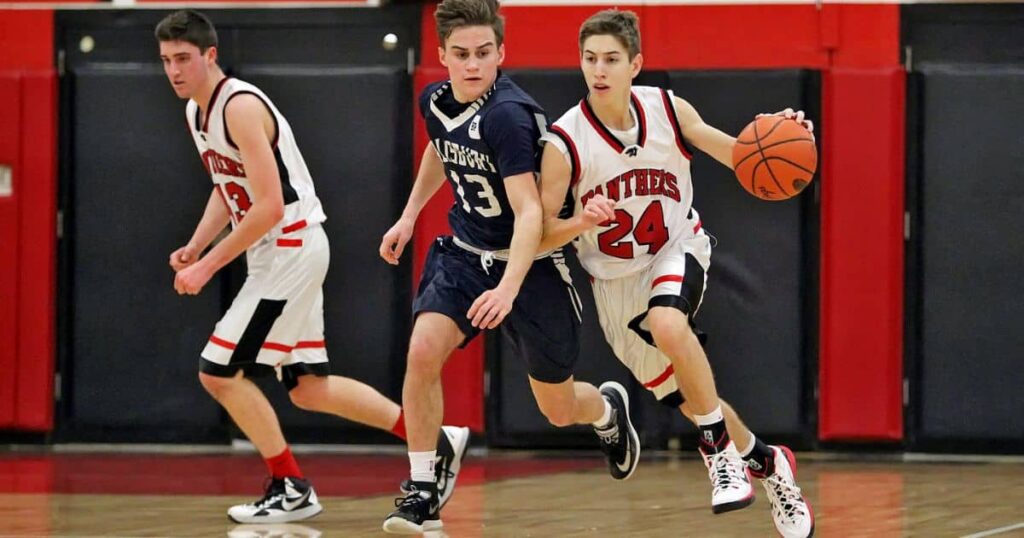In the realm of athletic footwear, the distinction between high-tops and basketball shoes often sparks confusion among consumers. While these terms are sometimes used interchangeably, they refer to different aspects of sports footwear. In this comprehensive guide, we’ll delve into the nuances that set high-tops and basketball shoes apart, helping you make an informed decision when selecting the perfect pair for your needs.
Understanding the Basics of High-Tops and Basketball Shoes
High-tops and basketball shoes are two distinct categories within the vast landscape of athletic footwear. High-tops, as the name suggests, are characterized by their extended upper that covers the ankle. On the other hand, basketball shoes are designed specifically for the sport of basketball, featuring a combination of supportive features to enhance performance on the court.
The Anatomy of High-Tops
Explore the dynamic design and functionality encapsulated in high-top footwear. From ankle support to fashion statements, delve into the anatomy of high-tops, examining their unique features and how they seamlessly blend style with performance in the world of footwear fashion.
Design and Structure
High-tops are easily identifiable by their extended upper that rises above the ankle. This design provides additional support and stability to the ankle joint, making high-tops a popular choice for sports that involve quick lateral movements and frequent direction changes, such as basketball and tennis.
Material and Construction
High-tops are constructed using a variety of materials, including leather, synthetic fabrics, and mesh. The choice of material often depends on the intended use of the footwear. Leather high-tops offer durability and a classic aesthetic, while synthetic materials are lighter and more breathable, making them suitable for activities that require agility.
Versatility
While high-tops are commonly associated with sports, they have found their way into casual and fashion wear. The versatility of high-tops makes them a popular choice for individuals seeking a stylish and functional shoe that can seamlessly transition from the gym to the streets.
Decoding Basketball Shoes

Specialized Design
Basketball shoes are engineered with the specific needs of basketball players in mind. They are designed to provide optimal support, cushioning, and traction on the basketball court. The high-cut design of basketball shoes mirrors that of high-tops, offering ankle support crucial for the rapid movements and jumps inherent in the sport.
Cushioning Technology
One of the defining features of basketball shoes is the advanced cushioning technology integrated into their design. Given the impact and stress placed on the feet during intense basketball games, these shoes often incorporate responsive cushioning materials, such as Nike’s Zoom Air or Adidas’ Boost technology, to enhance comfort and reduce the risk of injuries.
Traction
Basketball shoes feature a specialized outsole with a herringbone pattern, designed to provide maximum traction on the smooth and often slippery surfaces of basketball courts. This traction is crucial for quick cuts, pivots, and sudden stops that are integral to the sport.
Key Differences Between High-Tops and Basketball Shoes
Explore the essential variances distinguishing high-top sneakers from basketball shoes, encompassing design features, ankle support, and performance attributes, to make an informed choice based on your athletic and stylistic preferences.
Intended Use
The primary distinction lies in their intended use. High-tops, with their ankle-supporting design, cater to a broader range of sports and activities. They are suitable for activities that require lateral movements and stability but may not offer the specialized features needed for basketball.
Performance Features
Basketball shoes, on the other hand, are purpose-built for the demands of basketball. They prioritize features like advanced cushioning, ankle support, and superior traction, all tailored to enhance on-court performance. While high-tops provide ankle support, basketball shoes take it a step further with features specifically engineered for the dynamic nature of basketball gameplay.
Style vs. Functionality
High-tops are often chosen for their style and versatility, appealing to those who value a blend of fashion and function. They can be worn casually or as part of an athletic ensemble. In contrast, basketball shoes are more focused on functionality, prioritizing performance on the court over everyday wear.
Are High-Tops or Low Tops Better for Basketball?

The perennial debate over whether high-tops or low tops are superior for basketball has been a topic of discussion among athletes, coaches, and enthusiasts alike. Each style comes with its own set of advantages and considerations, contributing to the ongoing discourse on the optimal footwear for the basketball court.
Ankle Support
One of the primary factors influencing the high-tops vs. low tops debate is the level of ankle support provided by each style. High-tops, with their extended upper that covers and supports the ankle, have long been associated with injury prevention. The added stability they offer can be particularly beneficial for players with a history of ankle issues or those prone to injuries during rapid direction changes and jumps.
Conversely, low tops boast a lower cut, providing more freedom of movement for the ankle. While this can enhance agility and speed, it may come at the expense of some degree of ankle support. Players who prioritize quick, nimble movements on the court often lean towards low tops, trusting their ability to maneuver without the constraints of a higher collar.
Traction and Maneuverability
The choice between high-tops and low tops also hinges on the player’s style and the specific demands of their position on the basketball court. High-tops, with their increased ankle support, can be advantageous for positions that involve frequent stops, starts, and changes in direction. The stability offered by high-tops aids in maintaining balance during these abrupt movements, reducing the risk of ankle injuries.
Conversely, guards and players who rely on speed and quick cuts may find low tops more suitable. The lower profile allows for a greater range of motion, facilitating rapid changes in direction and enabling a more fluid playing style. The trade-off, however, may be a compromise in terms of the ankle’s vulnerability to certain injuries.
Personal Preference and Playing Style
Ultimately, the decision between high-tops and low tops often boils down to personal preference and playing style. Some players swear by the added security and peace of mind provided by high-tops, while others thrive on the freedom and flexibility afforded by low tops.
Consideration should also be given to factors such as foot anatomy and individual biomechanics. Players with a history of ankle issues may find reassurance in the extra support of high-tops, whereas those with a clean injury record might prioritize the agility offered by low tops.
High-Top vs. Low-Top Shoes Breakdown
This given below table provides a concise breakdown of the key features differentiating high-top and low-top shoes. Consider your preferences and intended use to make an informed decision when selecting the appropriate footwear.
| Feature | High-Tops | Low-Tops |
| Ankle Support | ✔️ Provides extended coverage above the ankle. | ❌ Offers minimal to no ankle coverage. |
| Versatility | ✔️ Suitable for various sports and activities. | ✔️ Well-suited for casual wear and everyday use. |
| Stability | ✔️ Enhanced stability due to higher cut. | ❌ May have less stability due to lower cut. |
| Fashion Appeal | ✔️ Often chosen for a stylish and trendy look. | ✔️ Offers a more casual and laid-back appearance. |
| Sports Performance | ✔️ Ideal for sports requiring lateral movements. | ❌ May not provide optimal support for some sports. |
| Common Uses | Basketball, tennis, fashion wear. | Casual wear, running, gym workouts. |
High Top vs Low Top Sneakers Fashion

When it comes to sneakers, the choice between high-top and low-top styles often boils down to personal preference and fashion sensibilities. Let’s break down the key characteristics of each style in a simple table format to help you make an informed decision based on your style preferences.
| Aspect | High-Top Sneakers | Low-Top Sneakers |
| Ankle Coverage | Extends above the ankle for added support. | Ends below the ankle for a more casual look. |
| Styling Options | Often perceived as sporty and edgy. | Versatile, suitable for various casual looks. |
| Outfit Pairing | Pairs well with jeans, joggers, and shorts. | Matches seamlessly with shorts and denim. |
| Occasion | Casual outings, streetwear, and athleisure. | Casual and everyday wear, less formal events. |
| Foot Visibility | Less of the foot is exposed due to the high cut. | Offers more visibility of the foot and ankle. |
| Popularity | Popular in streetwear and urban fashion. | Widely embraced in casual and classic styles. |
| Seasonal Considerations | Can provide additional warmth in colder seasons. | Suitable for warmer weather due to lower cut. |
| Athletic Association | Often associated with basketball and sports. | Casual and everyday wear, less sport-specific. |
Choosing between high-top and low-top sneakers ultimately depends on your style preferences and the occasion. High-tops exude a sporty and urban vibe, making them a staple in streetwear, while low-tops offer a more laid-back and versatile aesthetic. Consider the factors outlined in the table to find the perfect sneakers that align with your fashion sense and lifestyle.
Why Don’t Basketball Players Wear High Tops Anymore?
In the ever-evolving landscape of basketball footwear, the trend has shifted away from the traditional high-top design for several reasons. One significant factor is the evolution of sports science and biomechanics. Modern basketball shoes are crafted with a deep understanding of the biomechanics of the foot and ankle, offering targeted support without the need for an extended high-top silhouette.
Additionally, advancements in materials and manufacturing techniques have allowed for the creation of lightweight yet durable basketball shoes. These innovations cater to the need for agility and speed on the court, encouraging players to opt for lower-profile designs that enhance their natural movements. While high-tops were once synonymous with ankle protection, contemporary basketball shoes prioritize a balance between support and freedom of movement, ushering in a new era in basketball footwear design.
Where Does Actual Ankle Support Come From?

Contrary to the common belief that ankle support is solely derived from the height of the shoe, the reality is more nuanced. The primary source of ankle support comes from the shoe’s construction and the materials used in key areas. Reinforcements around the heel and midfoot, along with a well-designed lacing system, contribute significantly to stabilizing the ankle.
Modern sports science emphasizes the importance of a supportive midsole and outsole, focusing on the alignment of the foot during movement. Ankle support is a holistic concept that considers the entire structure of the shoe, from the sole to the upper, working in harmony to provide the necessary stability for athletic activities.
Comparing Low Tops and High Tops
The ongoing debate between low-top and high-top enthusiasts centers on the trade-off between ankle mobility and support. Low-top shoes offer greater freedom of movement, making them suitable for activities that prioritize agility and quick footwork, like soccer or running. However, this flexibility comes at the expense of reduced ankle support.
High-tops, conversely, sacrifice some mobility for enhanced ankle support, making them ideal for sports with frequent lateral movements and potential ankle stress, such as basketball. The choice between low-tops and high-tops ultimately depends on the specific requirements of the sport and the player’s personal preference regarding the balance between freedom of movement and ankle protection.
What About Mid-Tops?
Mid-tops represent a middle ground between low-tops and high-tops, combining elements of both designs. The mid-top design typically extends slightly above the ankle, offering a compromise between ankle support and mobility. This style has gained popularity for catering to athletes who seek a balance between the agility of low-tops and the support of high-tops.
Mid-tops are commonly favored in sports like basketball, where players require a degree of ankle stability without compromising on the ability to make quick, agile movements. The mid-top design has proven effective in providing adequate support for a wide range of athletic activities.
Which One Should You Choose?
The decision between high-tops, low-tops, or mid-tops ultimately hinges on individual preferences, playing style, and the demands of the chosen sport. Athletes who prioritize ankle support and stability may lean towards high-tops, while those valuing freedom of movement might opt for low-tops. Mid-tops offer a compromise, making them a versatile choice for various activities.
When selecting the right shoe, it’s crucial to consider factors such as foot anatomy, playing surface, and personal comfort. Trying on different styles and understanding how they complement your unique needs is key to finding the perfect balance between support and mobility.
Which Position Do You Play?

An athlete’s playing position can significantly influence the choice between high-tops, low-tops, or mid-tops. In basketball, for example, positions that involve frequent lateral movements, such as guards, may benefit more from the additional ankle support offered by high-tops. Centers, who engage in more physical play under the basket, might also find high-tops advantageous for added protection.
Conversely, players in positions that demand swift, agile movements, like forwards, may opt for the flexibility of low-tops or mid-tops. Understanding the specific demands of your position and how different shoe designs complement your playing style can guide you towards the footwear that best suits your athletic needs.
Frequently Asked Questions
Are high-tops safer for basketball?
High-tops can offer extra ankle support, reducing the risk of injuries during basketball.
Do all NBA players wear high-tops?
No, NBA players have different preferences, and not all of them wear high-tops; some choose low-tops or mid-tops.
What makes a basketball shoe different?
Basketball shoes are designed with features like ankle support, cushioning, and specialized traction for the specific demands of the sport.
What is the difference between high and low basketball shoes?
High basketball shoes have extended ankle support, while low basketball shoes offer more freedom of movement with a lower cut.
Conclusion
In the debate between high-tops and basketball shoes, the key lies in understanding your specific needs and preferences. If you engage in a variety of sports and activities that demand ankle support, high-tops may be the versatile choice for you. On the other hand, if you’re a dedicated basketball player seeking footwear optimized for on-court performance, investing in a quality pair of basketball shoes is paramount.
Remember to consider factors such as material, cushioning technology, and traction when making your decision. Whether you opt for the timeless appeal of high-tops or the specialized features of basketball shoes, choosing the right footwear ensures not only comfort but also optimal performance in your chosen activities. The world of athletic footwear offers a diverse array of options, so take the time to explore and find the perfect fit for your unique needs.



